The Next Level of Staffing Software
May 1, 2017
Staffing and recruiting software has been around for a while. The industry has seen staffing software go from a simple search and match tool to a robust model that helps run the entire business.
Staffing professionals are easily creating candidate profiles with automatic resume import, and software seamlessly integrates with 3rd party components such as background test companies. New candidates apply with web applicant self-entry, mobile database access is common and people take advantage of a host of other time saving features using their staffing software. So, what’s next?
The User Experience
Organizations set up specific processes and procedures in order to identify how the flow of work within the organization should be accomplished. However, the simple fact remains that everyone works in their own way. This is the core principle that defines the success of each individual. Today, companies are emphasizing individualism and encouraging employees to apply their own innovative solutions and approach to their work.
Closely aligned with this theory is the user’s ability to customize their personal software workspace. Allowing users to arrange data in ways that are most meaningful and productive to the way they work is priceless.
Collaboration
Although individualism is encouraged, so is collaboration. Companies are spending an extraordinary amount of time and money in order to present opportunities for employees to team together. Well defined collaboration areas and tools are being incorporated into workplaces that understand that collaboration boosts productivity to new heights.
Software, too, must focus on collaborative tools that inspire communication and teamwork. The old adage “two heads are better than one” has come back into fashion.
Immediate Data Insight
Business Intelligence Tools prevail over old fashioned static reports. Interactive data analysis provides instant access to information that represents what the stakeholder wants to know.
Data can be represented in multiple ways and it can service a plethora of purposes. Diverse reporting keeps business leaders in tune with what has happened, current trends, and future projections. It can also depict levels of productivity and performance within an organization. This immediate view delivers a wealth of knowledge for today’s business managers. The information provided can trigger immediate corrective action to help stay the course and improve profitability.
Artificial Intelligence
Analysis of data always sports strong trends. Although trending is nothing new, the way systems are incorporating trends with results has changed. For example, a software solution that gathers data associated with candidate submissions and then utilizes that data to rank candidates for future opportunities can be very valuable.
Who wouldn’t enjoy taking advantage of an analysis of customer choices and automatically applying that to a candidate search in order to produce top candidates for the job? We can expect to see more of this as artificial intelligence takes software to the next level.
Privacy and Security
All is not rosy as we tread new ways of presenting and utilizing data. Certainly, technology offers solutions and options that were unimaginable just a few short years ago. Accompanying the craving for more automated ways to improve business decisions and profitability is the inherent risk associated with using automation.
Gathering data bestows upon us the responsibility that personal information will not be used for purposes that could be destructive and harmful. There is often a fine line when it comes to objectively utilizing data to make business decisions. It opens up a conversation on what data is acceptable to use and for what purpose.
The more we reach out to collect data which is outside of the scope of our own environment, the greater the risk for data intrusion. Open gateways invite unwelcome visitors. Data protection is imperative. Network monitoring for intrusive attacks is probably the most critical piece that every company must have in place. Cloud environments have become extremely popular and a big reason for this is the professional protection that is necessary to operate a successful automated business.
Internal security is also on top of everyone’s mind. Remember, unprotected devices can infect an environment without warning. Even when on the cloud, if unprotected devices connect, data can be harmed. This is a real concern with BYOD (bring your own device) organizations. Email is huge for attracting unwanted and dangerous intruders.
A specific policy regarding devices and email management should be outlined by every company and explained to employees. Cover the basics such as never open suspicious emails from people you do not know; It is surprising how many people open such emails. This is especially difficult to navigate in the staffing industry with the constant flow of resumes from new candidates.
Last, change passwords often and warn employees never to share passwords. Apply security wisely and challenge why someone would need access to specific information. Limit reporting and exporting of data. Companies have experienced data theft which could have been avoided if data options were limited with security. When employees are terminated or resign, change their password immediately and discontinue their access to the network.
It’s a new world for staffing software and it is exciting to watch for what will be next!

